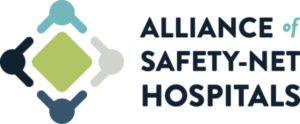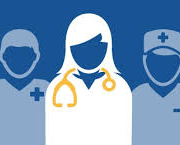The following is the latest COVID-19 information from the federal government as 2:30 p.m. on Thursday, October 1.
NASH Advocacy
- NASH has written to Health and Human Services Secretary Alex Azar asking HHS to abandon its new methodology for calculating hospitals’ COVID-19-related lost revenue. The new methodology, introduced recently, would redefine lost revenue as change in net operating income from 2019 to 2020. A previous methodology gave hospitals greater latitude for calculating lost revenue. In its letter, NASH explains that such a change would be especially disadvantageous to private safety-net hospitals because many of those hospitals have relatively modest resources and were forced to take sometimes dramatic steps to reduce their costs during the pandemic. Under the new definition, these hospitals would be required to return much of the Provider Relief Fund money to the federal government.
Provider Relief Fund
HHS announced the planned distribution of $20 billion in new funding for providers on the front lines of the COVID-19 pandemic. Under this Phase 3 General Distribution allocation, providers that have already received Provider Relief Fund payments will be invited to apply for additional funding that considers financial losses and increased expenses experienced due to COVID-19. Previously ineligible providers, such as those that began practicing in 2020, will also be invited to apply, and an expanded group of behavioral health providers confronting the emergence of increased mental health and substance use issues exacerbated by the pandemic will also be eligible for relief payments.
- This new distribution should be especially helpful for providers that have received minimum or no targeted relief, such as safety-net, high-impact, or rural distributions.
- Providers can begin applying for funds on Monday, October 5, 2020 and the application deadline is November 6.
- According to HHS’s news release,
- All provider submissions will be reviewed to confirm they have received a Provider Relief Fund payment equal to approximately 2 percent of patient care revenue from prior general distributions. Applicants that have not yet received Relief Fund payments of 2 percent of patient revenue will receive a payment that, when combined with prior payments (if any), equals 2 percent of patient care revenue.
- With the remaining balance of the $20 billion budget, HRSA will then calculate an equitable add-on payment that considers the following:
- A provider’s change in operating revenues from patient care.
- A provider’s change in operating expenses from patient care, including expenses incurred related to coronavirus.
- Payments already received through prior Provider Relief Fund distributions.
Go here to learn more about the distribution.
- HHS has published a new summary of reporting requirements for recipients of the Provider Relief Fund grants.
Department of Health and Human Services
Centers for Medicare & Medicaid Services
Congress has passed, and the president has now signed, a continuing resolution to fund the federal government through December 11. The resolution includes a provision that would change the terms under which providers must repay federal CARES Act money they received through the Medicare Accelerated and Advance Payment program, which is administered by CMS. Now, recoupment will begin only a year after providers received their loan and recoupment is reduced from 100 percent to 25 percent during the first 11 months of repayment and 50 percent for the six following months, with hospitals now having 29 months to repay their loans in full before they would need to begin paying interest. That interest rate, too, is lowered under the continuing resolution from 9.6 percent to 4.0 percent.
- CMS has updated its compendium of temporary waivers and flexibilities for teaching hospitals, teaching physicians, and medical residents during the COVID-19 pandemic. A new flexibility, on page 2 of the document, explains that instead of requiring that new Medicare GME affiliation agreements be submitted to CMS and MACs by July 1, 2020 for the academic year starting July 1, 2020 and amendments to Medicare GME affiliation agreements be submitted to CMS and the MACs by June 30, 2020 for the academic year ending June 30, 2020, CMS is permitting hospitals to submit new and/or amended Medicare GME affiliation agreements as applicable to CMS and the MACs by January 1, 2021.
- CMS has updated its COVID-19 testing methodology for nursing homes by revising the methodology it employs to determine the rate of COVID-19 positivity in counties across the country.
- CMS has published guidance addressing the emergency preparedness testing exercise requirements for COVID-19. CMS regulations for emergency preparedness require specific testing exercises to validate facilities’ emergency programs.
Food and Drug Administration
- The FDA has published state-by-state and national forecasts of COVID-19 hospitalizations for the next four weeks.
- The FDA has issued emergency use authorization for a prediction system to be used by health care providers in hospitals for adult patients with confirmed COVID-19 for the computation of proprietary patient status indices referred to as Respiratory Decompensation Status and Hemodynamic Instability Status (collectively referred to as “risk level determinations”) as an adjunct to patient monitoring during the COVID-19 outbreak.
National Institutes of Health
The NIH has awarded $234 million to improve COVID-19 testing for underserved and vulnerable populations. The program will support 32 institutions and focus on populations disproportionately affected by the pandemic, including African Americans, American Indians/Alaskan Natives, Latinos/Latinas, Native Hawaiians, older adults, pregnant women, and those who are homeless or incarcerated.
Federal Communications Commission
- The FCC has extended from September 30 to December 31, 2020 the deadline for recipients of funding from its $200 million COVID-19 Telehealth Program to purchase eligible devices and implement eligible services.

 HHS announced the planned distribution of $20 billion in new funding for providers on the front lines of the COVID-19 pandemic. Under this Phase 3 General Distribution allocation, providers that have already received Provider Relief Fund payments will be invited to apply for additional funding that considers financial losses and increased expenses experienced due to COVID-19. Previously ineligible providers, such as those that began practicing in 2020, will also be invited to apply, and an expanded group of behavioral health providers confronting the emergence of increased mental health and substance use issues exacerbated by the pandemic will also be eligible for relief payments.
HHS announced the planned distribution of $20 billion in new funding for providers on the front lines of the COVID-19 pandemic. Under this Phase 3 General Distribution allocation, providers that have already received Provider Relief Fund payments will be invited to apply for additional funding that considers financial losses and increased expenses experienced due to COVID-19. Previously ineligible providers, such as those that began practicing in 2020, will also be invited to apply, and an expanded group of behavioral health providers confronting the emergence of increased mental health and substance use issues exacerbated by the pandemic will also be eligible for relief payments. Congress has passed, and the president has now signed,
Congress has passed, and the president has now signed,  The NIH has
The NIH has 